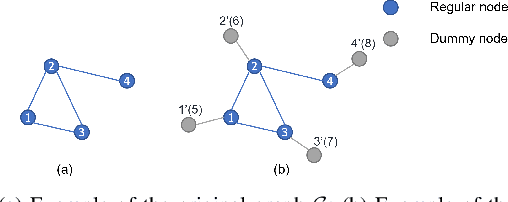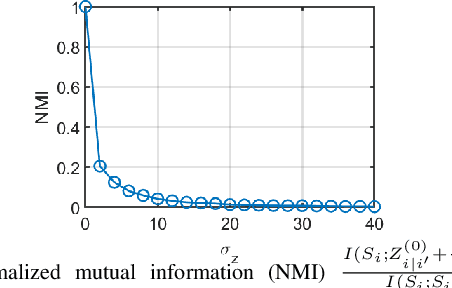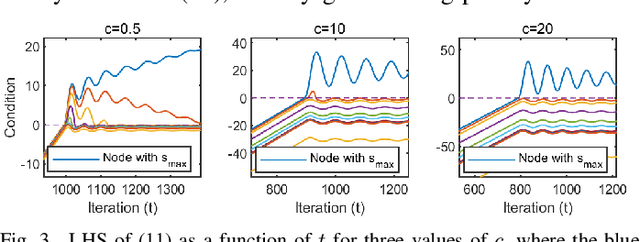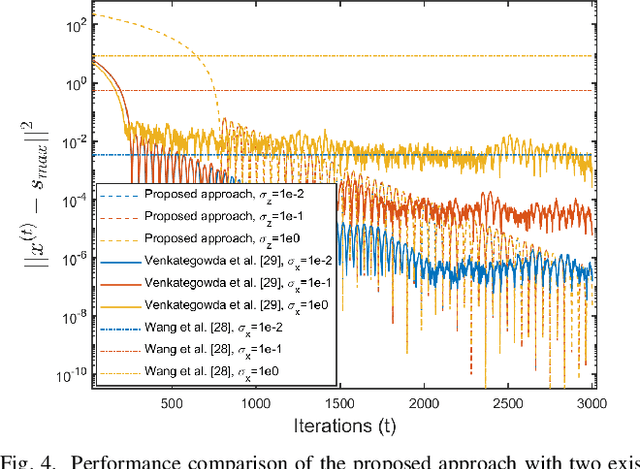Jun Pang
How does the optimizer implicitly bias the model merging loss landscape?
Oct 06, 2025Abstract:Model merging methods combine models with different capabilities into a single one while maintaining the same inference cost. Two popular approaches are linear interpolation, which linearly interpolates between model weights, and task arithmetic, which combines task vectors obtained by the difference between finetuned and base models. While useful in practice, what properties make merging effective are poorly understood. This paper explores how the optimization process affects the loss landscape geometry and its impact on merging success. We show that a single quantity -- the effective noise scale -- unifies the impact of optimizer and data choices on model merging. Across architectures and datasets, the effectiveness of merging success is a non-monotonic function of effective noise, with a distinct optimum. Decomposing this quantity, we find that larger learning rates, stronger weight decay, smaller batch sizes, and data augmentation all independently modulate the effective noise scale, exhibiting the same qualitative trend. Unlike prior work that connects optimizer noise to the flatness or generalization of individual minima, we show that it also affects the global loss landscape, predicting when independently trained solutions can be merged. Our findings broaden the understanding of how optimization shapes the loss landscape geometry and its downstream consequences for model merging, suggesting the possibility of further manipulating the training dynamics to improve merging effectiveness.
Spurious Privacy Leakage in Neural Networks
May 26, 2025Abstract:Neural networks are vulnerable to privacy attacks aimed at stealing sensitive data. The risks can be amplified in a real-world scenario, particularly when models are trained on limited and biased data. In this work, we investigate the impact of spurious correlation bias on privacy vulnerability. We introduce \emph{spurious privacy leakage}, a phenomenon where spurious groups are significantly more vulnerable to privacy attacks than non-spurious groups. We further show that group privacy disparity increases in tasks with simpler objectives (e.g. fewer classes) due to the persistence of spurious features. Surprisingly, we find that reducing spurious correlation using spurious robust methods does not mitigate spurious privacy leakage. This leads us to introduce a perspective on privacy disparity based on memorization, where mitigating spurious correlation does not mitigate the memorization of spurious data, and therefore, neither the privacy level. Lastly, we compare the privacy of different model architectures trained with spurious data, demonstrating that, contrary to prior works, architectural choice can affect privacy outcomes.
Efficient Data Selection for Training Genomic Perturbation Models
Mar 18, 2025Abstract:Genomic studies, including CRISPR-based PerturbSeq analyses, face a vast hypothesis space, while gene perturbations remain costly and time-consuming. Gene expression models based on graph neural networks are trained to predict the outcomes of gene perturbations to facilitate such experiments. Active learning methods are often employed to train these models due to the cost of the genomic experiments required to build the training set. However, poor model initialization in active learning can result in suboptimal early selections, wasting time and valuable resources. While typical active learning mitigates this issue over many iterations, the limited number of experimental cycles in genomic studies exacerbates the risk. To this end, we propose graph-based one-shot data selection methods for training gene expression models. Unlike active learning, one-shot data selection predefines the gene perturbations before training, hence removing the initialization bias. The data selection is motivated by theoretical studies of graph neural network generalization. The criteria are defined over the input graph and are optimized with submodular maximization. We compare them empirically to baselines and active learning methods that are state-of-the-art on this problem. The results demonstrate that graph-based one-shot data selection achieves comparable accuracy while alleviating the aforementioned risks.
From Centralized to Decentralized Federated Learning: Theoretical Insights, Privacy Preservation, and Robustness Challenges
Mar 10, 2025



Abstract:Federated Learning (FL) enables collaborative learning without directly sharing individual's raw data. FL can be implemented in either a centralized (server-based) or decentralized (peer-to-peer) manner. In this survey, we present a novel perspective: the fundamental difference between centralized FL (CFL) and decentralized FL (DFL) is not merely the network topology, but the underlying training protocol: separate aggregation vs. joint optimization. We argue that this distinction in protocol leads to significant differences in model utility, privacy preservation, and robustness to attacks. We systematically review and categorize existing works in both CFL and DFL according to the type of protocol they employ. This taxonomy provides deeper insights into prior research and clarifies how various approaches relate or differ. Through our analysis, we identify key gaps in the literature. In particular, we observe a surprising lack of exploration of DFL approaches based on distributed optimization methods, despite their potential advantages. We highlight this under-explored direction and call for more research on leveraging distributed optimization for federated learning. Overall, this work offers a comprehensive overview from centralized to decentralized FL, sheds new light on the core distinctions between approaches, and outlines open challenges and future directions for the field.
Privacy-Preserving Distributed Maximum Consensus Without Accuracy Loss
Sep 16, 2024



Abstract:In distributed networks, calculating the maximum element is a fundamental task in data analysis, known as the distributed maximum consensus problem. However, the sensitive nature of the data involved makes privacy protection essential. Despite its importance, privacy in distributed maximum consensus has received limited attention in the literature. Traditional privacy-preserving methods typically add noise to updates, degrading the accuracy of the final result. To overcome these limitations, we propose a novel distributed optimization-based approach that preserves privacy without sacrificing accuracy. Our method introduces virtual nodes to form an augmented graph and leverages a carefully designed initialization process to ensure the privacy of honest participants, even when all their neighboring nodes are dishonest. Through a comprehensive information-theoretical analysis, we derive a sufficient condition to protect private data against both passive and eavesdropping adversaries. Extensive experiments validate the effectiveness of our approach, demonstrating that it not only preserves perfect privacy but also maintains accuracy, outperforming existing noise-based methods that typically suffer from accuracy loss.
KAGNNs: Kolmogorov-Arnold Networks meet Graph Learning
Jun 26, 2024



Abstract:In recent years, Graph Neural Networks (GNNs) have become the de facto tool for learning node and graph representations. Most GNNs typically consist of a sequence of neighborhood aggregation (a.k.a., message passing) layers. Within each of these layers, the representation of each node is updated from an aggregation and transformation of its neighbours representations at the previous layer. The upper bound for the expressive power of message passing GNNs was reached through the use of MLPs as a transformation, due to their universal approximation capabilities. However, MLPs suffer from well-known limitations, which recently motivated the introduction of Kolmogorov-Arnold Networks (KANs). KANs rely on the Kolmogorov-Arnold representation theorem, rendering them a promising alternative to MLPs. In this work, we compare the performance of KANs against that of MLPs in graph learning tasks. We perform extensive experiments on node classification, graph classification and graph regression datasets. Our preliminary results indicate that while KANs are on-par with MLPs in classification tasks, they seem to have a clear advantage in the graph regression tasks.
Graph Neural Networks for Treatment Effect Prediction
Mar 28, 2024



Abstract:Estimating causal effects in e-commerce tends to involve costly treatment assignments which can be impractical in large-scale settings. Leveraging machine learning to predict such treatment effects without actual intervention is a standard practice to diminish the risk. However, existing methods for treatment effect prediction tend to rely on training sets of substantial size, which are built from real experiments and are thus inherently risky to create. In this work we propose a graph neural network to diminish the required training set size, relying on graphs that are common in e-commerce data. Specifically, we view the problem as node regression with a restricted number of labeled instances, develop a two-model neural architecture akin to previous causal effect estimators, and test varying message-passing layers for encoding. Furthermore, as an extra step, we combine the model with an acquisition function to guide the creation of the training set in settings with extremely low experimental budget. The framework is flexible since each step can be used separately with other models or policies. The experiments on real large-scale networks indicate a clear advantage of our methodology over the state of the art, which in many cases performs close to random underlining the need for models that can generalize with limited labeled samples to reduce experimental risks.
On Quantified Observability Analysis in Multiagent Systems
Oct 04, 2023Abstract:In multiagent systems (MASs), agents' observation upon system behaviours may improve the overall team performance, but may also leak sensitive information to an observer. A quantified observability analysis can thus be useful to assist decision-making in MASs by operators seeking to optimise the relationship between performance effectiveness and information exposure through observations in practice. This paper presents a novel approach to quantitatively analysing the observability properties in MASs. The concept of opacity is applied to formally express the characterisation of observability in MASs modelled as partially observable multiagent systems. We propose a temporal logic oPATL to reason about agents' observability with quantitative goals, which capture the probability of information transparency of system behaviours to an observer, and develop verification techniques for quantitatively analysing such properties. We implement the approach as an extension of the PRISM model checker, and illustrate its applicability via several examples.
Ownership Protection of Generative Adversarial Networks
Jun 08, 2023Abstract:Generative adversarial networks (GANs) have shown remarkable success in image synthesis, making GAN models themselves commercially valuable to legitimate model owners. Therefore, it is critical to technically protect the intellectual property of GANs. Prior works need to tamper with the training set or training process, and they are not robust to emerging model extraction attacks. In this paper, we propose a new ownership protection method based on the common characteristics of a target model and its stolen models. Our method can be directly applicable to all well-trained GANs as it does not require retraining target models. Extensive experimental results show that our new method can achieve the best protection performance, compared to the state-of-the-art methods. Finally, we demonstrate the effectiveness of our method with respect to the number of generations of model extraction attacks, the number of generated samples, different datasets, as well as adaptive attacks.
PriSampler: Mitigating Property Inference of Diffusion Models
Jun 08, 2023



Abstract:Diffusion models have been remarkably successful in data synthesis. Such successes have also driven diffusion models to apply to sensitive data, such as human face data, but this might bring about severe privacy concerns. In this work, we systematically present the first privacy study about property inference attacks against diffusion models, in which adversaries aim to extract sensitive global properties of the training set from a diffusion model, such as the proportion of the training data for certain sensitive properties. Specifically, we consider the most practical attack scenario: adversaries are only allowed to obtain synthetic data. Under this realistic scenario, we evaluate the property inference attacks on different types of samplers and diffusion models. A broad range of evaluations shows that various diffusion models and their samplers are all vulnerable to property inference attacks. Furthermore, one case study on off-the-shelf pre-trained diffusion models also demonstrates the effectiveness of the attack in practice. Finally, we propose a new model-agnostic plug-in method PriSampler to mitigate the property inference of diffusion models. PriSampler can be directly applied to well-trained diffusion models and support both stochastic and deterministic sampling. Extensive experiments illustrate the effectiveness of our defense and it makes adversaries infer the proportion of properties as close as random guesses. PriSampler also shows its significantly superior performance to diffusion models trained with differential privacy on both model utility and defense performance.
 Add to Chrome
Add to Chrome Add to Firefox
Add to Firefox Add to Edge
Add to Edge